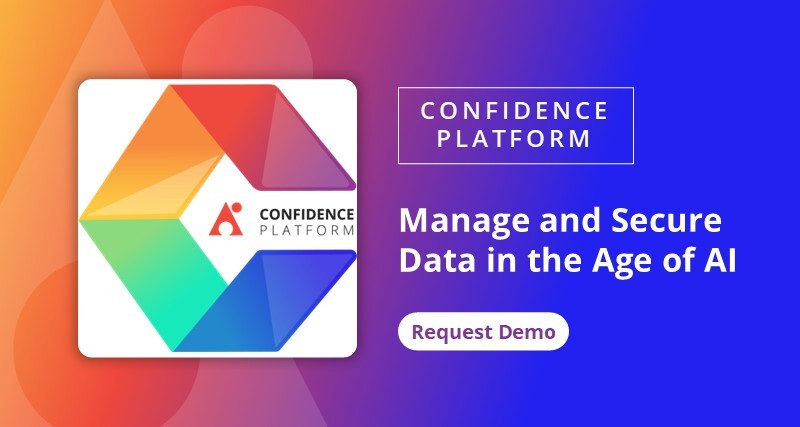Let’s be honest — most of us have too many phone applications. I’ve got at least 200, and if you’re anything like me, you’ve probably had that moment where you’re scrolling through pages of icons thinking, “Surely there’s a better way to do this.” Here’s the thing: Wouldn’t it be amazing if just one app could do everything we needed?
This exact idea – consolidation, simplification, and smarter integration – is at the heart of a Tech Edge episode with John Peluso, chief product and technology officer at AvePoint. We sat down to unpack the difference between products and platforms and why this distinction is becoming increasingly critical for organizations keeping pace with technology.
Product vs. Platform: What’s the Real Difference?
Let’s start with John’s basic definitions. A product is typically a standalone application designed to solve a specific problem. Think of it like a tool in a toolbox — great for one job but not much else.
A platform, on the other hand, is more of a workbench. It’s a foundation that supports multiple tools, workflows, and integrations. It’s about solving one problem and enabling solutions across a spectrum of needs.
John put it this way:
A product is an application of a solution that solves a problem. A platform is built to solve multiple problems across various domains.
This powerful distinction is becoming more relevant as organizations look to scale, innovate, and future-proof their operations. Consider Microsoft 365, which represents a different type of platform approach, where the vendor has built numerous applications around a standard model for file storage, notifications, and user management. Microsoft provides extensive pre-built solutions while still offering extensibility for organizations to develop their own applications that interact with the platform.
The Smartphone Analogy: Breaking Down the Basics
To make this more tangible, John pointed out something we all use every day: our phones.
Your smartphone can be considered a platform. It doesn’t just make calls; it hosts hundreds of apps, all of which rely on shared services like notifications, location tracking, and cloud storage. You don’t need each app to reinvent the wheel. The platform, your smartphone, handles the heavy lifting.
“Each application on your phone doesn’t have to figure out how to notify you — that’s part of the platform,” John explained.
This shared infrastructure is what makes platforms so powerful. Platforms create consistency, reduce redundancy, and allow developers (and organizations) to focus on innovation rather than managing foundational services.
Why Are Organizations Leaning Into Platforms?
Why are more businesses building or adopting platforms instead of just buying off-the-shelf products?
It comes down to flexibility and extensibility.
Many organizations hit a wall with traditional products. They’re great until you find yourself needing a feature that doesn’t exist or trying to integrate with a system that wasn’t designed to play nicely with others.
That’s when the platform approach starts to shine.
“The ability for that platform to offer interfaces or capabilities to go beyond what the developer of an application has already thought of doing is super valuable,” John said.
In other words, platforms give you room to grow. It’s not only solving today’s problems but also preparing for tomorrow.
Let’s Talk About the Weeds (Literally)
Now, I love a good metaphor and couldn’t help but compare platforms to my garden. I’ve spent years planting fruit trees, and now I’m finally reaping the rewards: No more overpriced berries at the store! Yet, here’s the catch: the maintenance is relentless. Weeds, pests, unpredictable weather … It’s a lot of time and energy invested.
Platforms are the same. Building one is just the beginning, but maintaining it? That’s where the real work begins. John elaborated on this challenge. He explained that it’s not just about the anticipated upkeep but also the constant, unforeseen hurdles that arise when managing your own technology.
This leads to a compelling solution of balance between extensibility and innovation.
And he’s right. Think about how quickly generative AI (GenAI) has gone from buzzword to business critical. If your platform can’t keep up with that pace of change, you will fall behind fast.
The Hidden Costs of Do-It-Yourself Platforms
There’s a significant cost to building platforms in-house. When organizations take this route, they inherit the full responsibility of staying ahead of every emerging trend, managing ongoing security updates, and navigating the complexities of integration, all while trying to run their core business.
That’s a full-time job, and most businesses already have one of those.
This is where the idea of strategic outsourcing comes in. By partnering with a platform provider that’s already doing the heavy lifting – watching the trends, updating the infrastructure, ensuring compliance – you can focus on what really matters: delivering value to your customers.
It’s not about giving up control, but more about choosing where to invest your energy.
Why Does This Matter for User Experience?
At the end of the day, all of this – products, platforms, extensibility, maintenance – comes back to one thing: the user experience.
When your tools are fragmented, your users feel it: They’re juggling logins, navigating inconsistent interfaces, and wasting time switching between systems. That’s just frustrating and inefficient.
A well-designed platform creates a seamless experience: one login, one interface, and one support team. That simplicity translates into better outcomes for your employees, customers, and bottom line.
As John put it, “The more you can find a provider of solutions that has established a continuum across multiple use cases – which is what a platform is – the better it’s going to be.”
Should You Build or Adopt a Platform?
This is the million-dollar question. And like most things in tech, the answer is: it depends. Organizations rarely have just one problem — they have multiple, interconnected challenges. The things they need to accomplish aren’t disconnected and disparate.
Building your own platform might make sense if you have particular needs that no vendor can meet. However, be prepared for the long haul. You’ll need the resources, the expertise, and the stamina to keep it running and evolving.
For most organizations, though, the smarter move is to adopt a platform that’s built for extensibility. One that gives you the flexibility to customize, without the burden of maintaining the entire ecosystem.
It’s about finding the right balance between control and convenience.
Think Bigger Than the Problem in Front of You
If there’s one thing I took away from this conversation with John, it’s this: Don’t just solve the problems you have today. Think about the issues you haven’t encountered yet.
Here are some actionable steps to position your organization for sustainable growth and operational excellence:
- Start with a comprehensive audit. Map out all your current applications and identify overlaps, redundancies, and gaps. Look for patterns where multiple products are trying to solve related problems.
- Evaluate extensibility seriously. Look at what a platform can do today and understand how it can evolve with your needs. Ask potential vendors about their application programming interfaces (APIs), customization capabilities, and roadmap for new features.
- Calculate the total cost of ownership. Include not just licensing fees, but the ongoing costs of training, maintenance, integration, and the opportunity cost of managing multiple vendor relationships.
- Consider your organizational capacity. Be honest about your team’s ability to maintain and evolve custom solutions. A custom-built system is worthless if you can’t keep it current with changing technology and business needs.
Platforms aren’t just about technology. It’s about strategy and creating a foundation that can grow with you, adapt with you, and support you as your business evolves. So, the next time you evaluate a new tool or solution, ask yourself: Is this just a product, or is it part of a platform that can take me further? That distinction makes all the difference in a world where the only constant is change.
Choose your platform wisely, and you’ll spend less time pulling weeds and more time enjoying the fruits of your labor. Check out this episode and more here: The Tech Edge — Ticker.


